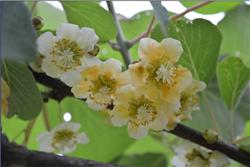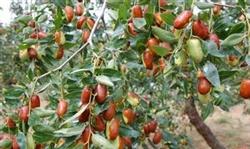Removal method of kiwifruit rust

In a broad sense, fruit rust refers to a physiological disease of rust-like pollutants produced on the surface of fruits stimulated by friction and drug pollution during fruit growth, and a rust-like pollutants formed on the surface of fruits by rain washing down rust, old leaves or diseased leaves and dust on trees during fruit growth; In a narrow sense, fruit rust only refers to a physiological disease of rust-like pollutants produced on the surface of fruits due to friction and drug pollution stimulation during fruit growth. Although fruit rust does not affect the eating quality of fruits, it seriously affects the appearance quality of fruits, thus reducing the commodity value of fruits. With the continuous improvement of people's living standards, the problem of fruit rust, which was not paid attention to by consumers, has attracted more and more attention. In the past, only the problem of fruit rust of hairless fruits such as apples, pears and citrus has gradually changed to the appearance quality of hairy fruits such as kiwi fruits and peaches. At present, the main methods of fruit rust control are bagging, reasonable pruning, increasing fertilizer, replacing iron wires on scaffolding and washing fruits. Bagging refers to a relatively closed bag for the fruit in order to isolate the fruit from the external environment at the early stage of fruit growth. Bagging has the following functions: A. Promoting fruit coloring: bagging can promote fruit coloring, but due to many varieties of peach and inconsistent maturity, the difficulty of fruit coloring of each variety varies greatly. Therefore, in order to promote coloring, the fruit bags selected for each type of variety are different. For varieties that are easy to color, white and yellow single-layer bags can be used; for varieties that are difficult to color, composite single-layer bags with white inside and black inside should be used, or the outer layer is white inside and black composite paper, and the inner layer is white translucent double-layer bags. B Keep the fruit surface clean: The physical protection of fruit bagging can prevent dust, pesticides and insect secretions from directly contaminating the fruit and producing fruit rust, ensuring that the fruit surface is clean. C. Prevention and control of pests and diseases: It has a preventive effect on fruit borers and diseases. The main bagging pest of peach in our country is mulberry pollen mosquito. In the field where mulberry pollen mosquito is found, insect bag should be selected. D to prevent cracking fruit: easy to crack fruit varieties, bagging has the effect of preventing cracking fruit. Fruit bagging is one of the most effective measures to prevent fruit rust. If good quality fruit bags are selected and correct bagging techniques are adopted, the rate of rust-free fruit can reach more than 90%, which can significantly improve the commodity value of fruits. 2, reasonable pruning and fertilizer application reasonable pruning and fertilizer application in addition to fruit rust mainly play a preventive role, mainly to prevent fruit rust formed by physiological diseases. This kind of fruit rust is formed by breaking up the epidermal cell layer and its covering, exposing the cork cells. Reasonable pruning mouth is to control the load, plus strict vegetables and fruits, reduce the nutrient consumption of the tree, promote fruit growth; open the light path around the fruit, at the same time clean up the diseased leaves, old leaves, etc. around the fruit, so that the fruit has a suitable growth environment during the growth process, and can heal in time after micro-trauma, avoiding the formation of fruit rust and other physiological diseases in the later stage. The purpose of fertilizer application is also to strengthen tree nutrition, rejuvenate tree vigor, promote vigorous fruit growth, and enhance its ability to resist adverse environment and trauma. 3. Selection of rust resistant varieties and reasonable spraying of pesticides are the basic links of fruit rust prevention. Timely application of medicine is the key step to prevent fruit rust. Application of medicine in sensitive period of fruit growth will cause a large number of rust spots on fruit. Young fruit period can not be sprayed with bordeaux mixture and other copper-containing fungicides or organophosphorus pesticides: generally used before wheat harvest. Can choose methyl thiophanate, epidemic frost manganese zinc, hydantoin, Polaroid and other fungicides to prevent diseases, with chrysanthemum lipids or carbamate pesticides to control insects, but can not use omethoate, water amine thiophanate and other rust-causing drugs. In case of low temperature and rainy weather or foggy and windy weather, 200 times high fat film can be sprayed on the fruit, which can not only prevent other diseases, but also reduce the occurrence of fruit rust. In the spraying operation, the sprayer with appropriate nozzle aperture and pressure should be selected to achieve fine mist and uniform spray distribution, and the nozzle should not be too close to the fruit to avoid mechanical damage to the fruit. 4, replace the iron wire on the shelf for fruit trees such as kiwi, grapes, etc., to a large extent, fruit rust is due to rain on the shelf dust, sick body, iron oxide washed to the surface of the fruit pollutants, especially in Shaanxi, kiwi fruit harvest about a month before the rain is the most season, so that the fruit growth process to form a large number of pollutants, and these pollutants are rust most. Therefore, replacing rusty iron wire with lead wire in combination with winter pruning will reduce the occurrence of fruit rust. 5, fruit washing is a very important method to remove fruit rust, generally with some non-toxic, pollution-free salt, acid, organic solvents for fruit soaking, the dust on the fruit surface, fruit rust, fruit scars, etc. to clean the fruit surface, remove pollution, improve the value of the product effect. At present, there are two main purposes of fruit washing in China: A. Improve the smoothness of fruit surface and reduce fruit surface pollution. The fruit surface pollution caused by early micro-trauma, diseased body, dust and the like in the fruit growth process is washed away by washing the fruit, so that the fruit surface smoothness is improved, the market demand is met, the market competitiveness of the fruit is increased, and the economic benefit is improved;B, pesticide residues on the fruit skin are washed. At present, for smooth and hairless fruits such as apples, pears and oranges, some solvents with low solubility or high solubility are mainly used for cleaning; But for hairy fruits such as kiwifruit and peach, the cleaning effect is still poor when the above solution or original concentration is used. The experimental study of Northwest University of Agriculture and Forestry Science and Technology shows that the effect of cleaning rust of rust-bearing kiwifruit is the best when the rust-bearing kiwifruit is soaked in 2% oxalic acid solution for 15min, and the cleaning agent is nontoxic, non-irritating to human body and non-polluting to environment. It has broad application prospects.
- Prev

Key points of post-anthesis management of kiwifruit
Forty days after kiwifruit blossoms, it is a critical period for kiwifruit management. The fruit expands rapidly and requires a lot of nutrients and water. First, fertilization after falling flowers, in mid-May, timely application of urea, diammonium, potassium chloride or ternary compound fertilizer, fertilizer application amount of urea 20 kg per mu, diammonium 15 kg, chlorination.
- Next

Three tricks for jujube trees to sit on fruit
First, rational chemical control. Before flowering (around the beginning of May), each big tree was topdressing 0.5 kg urea and 0.25 kg urea per tree, and the compound fertilizer of N, P and K was applied again at the young fruit development period after flowering (mid-late June), about 0.75 kg per tree. Spray 10~50ppm gibberellin solution at the early stage of flowering or in full bloom.
Related
- Moge, come on! The staff of the peasant association in the producing area of cantaloupe were frightened when the crowd gathered.
- Causes and Solutions of low Fruit setting rate of Apple
- Symptoms and control measures of passion fruit virus disease
- Fruit growing lesson: how do apple orchards keep high yields?
- Can you build orchards in the mountains? What are the pros and cons?
- How to manage the coloring period of Crisson grape?
- This paper introduces the processing technology of two kinds of fig products.
- How much is a month for retired teachers in rural areas by 2020?
- How can strawberry planting increase sugar content? We should pay attention to management in many aspects.
- What are the cultivation techniques on how to improve the yield of golden fruit?

